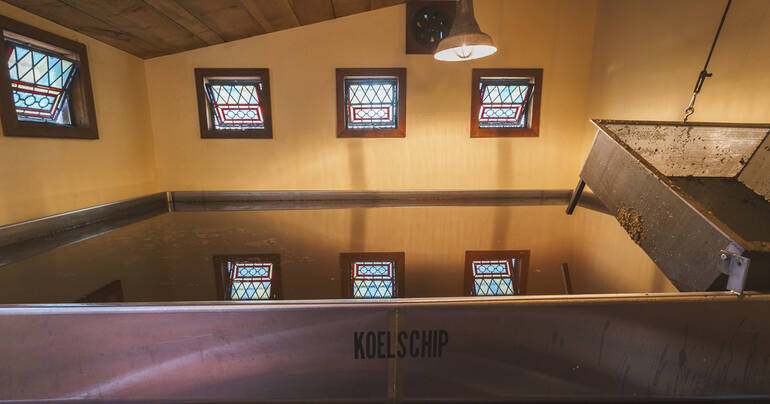Start 14-Day Trial Subscription
*No credit card required

The Function of a Coolship in Brewing Wild Ales
If you’re a fan of breweries such as Russian River, Allagash or Jester King, you may have heard mention of a brewing device called a coolship. Allagash, in fact, has an entire line of beers with “coolship” in its name. But what exactly is a coolship? What is it used for? Why is it called that? And is it any different from a koelschip?
To answer, a little background in modern brewing techniques is needed.
Wort, the sugary liquid that’s beer before it’s beer, is boiled during its production. Hops are also typically added during this stage. However, the wort is much too warm at this point to begin fermentation. To cool it most efficiently, it is passed through a heat exchanger (typically a plate exchanger, where the wort and cool water are passed alongside each other in separate pipes through a series of plates, where the heat is “exchanged” from the wort to the cooler water). Once the wort has sufficiently cooled, yeast is then added to begin fermentation. Very specific yeast strains are used depending on style to produce the desired flavors, textures, and aromas once fermentation has completed.
Fermentation most typically takes place in an enclosed environment to prohibit the introduction of bacteria or any other nasty objects (or “microflora”) from contaminating the liquid and producing any unwanted off-flavors and/or aromas. This is the key to style — specific yeast strains fermenting the wort at a specific temperature. But how was this done before refrigeration was invented to cool the water that goes into the heat exchanger? Especially before anyone understood what yeast even was or did, let alone different strains? Enter the coolship.
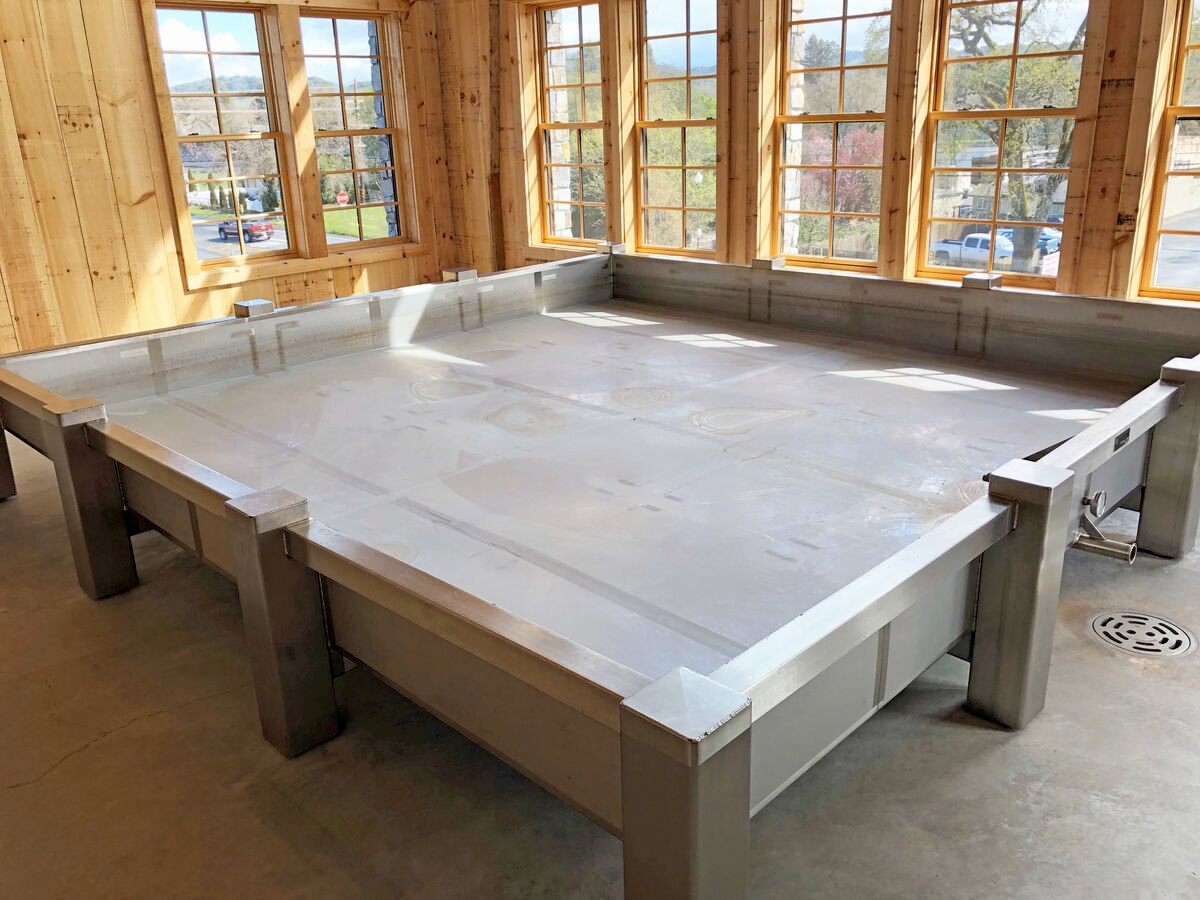
What exactly is a coolship? What is it used for? Why is it called that? And is it any different from a koelschip?
First, a little housekeeping. You may have seen the word “koelschip” and wondered, “what’s the difference?” Answer: none. “Koelschip” is the original Flemish spelling (and, if you ask Russian River Brewing’s Natalie Cilurzo, the proper spelling). Americans, as we are wont to do, anglicized the spelling to coolship. But they are one and the same — a large, flat, open container that boiled wort is poured into to cool.
As to how the name, regardless of spelling, originated — one theory, dating back to Medieval times, posits that crude early vessels, commonly made of hollowed-out tree trunks, vaguely resembled boats. Since these “boats” were used to “cool” the wort — well, there you go.
As time passed, brewers learned that larger, more shallow vessels shortened the cooling time due to the maximum surface area being exposed to the open air. The industrial revolution then allowed brewers to make these pans of metal (specifically copper) which drew out the heat much more quickly. They also learned to elevate the bottom above the ground to encourage air flow underneath, further enhancing cooling. [An aside — one writer described a coolship as a “giant brownie baking pan.” Have not found a better descriptor in all my research.]
This large exposed area served as a giant pool for ambient yeasts, bacteria and other floating critters to jump in, naturally inoculating the wort and beginning spontaneous fermentation. These beers typically turned out quite sour by today’s tastes. This, in essence, is beer’s equivalent of “terroir.” In wine speak, terroir is the confluence of everything local — soil, precipitation, climate, etc. – that determines the unique characteristics of a particular region’s wine.
In brewing with coolships, the confluence of the local water used and all those local critters that jump into that big wort pool determines the unique characteristics of that brewery’s beer. Also, as with many wines, the final bottled product is the result of a blend of individual beers that have been aged in barrels for various lengths of time. (Specifically, to make a Gueuze, the final blend MUST be made of one-, two- and three-year old beers).
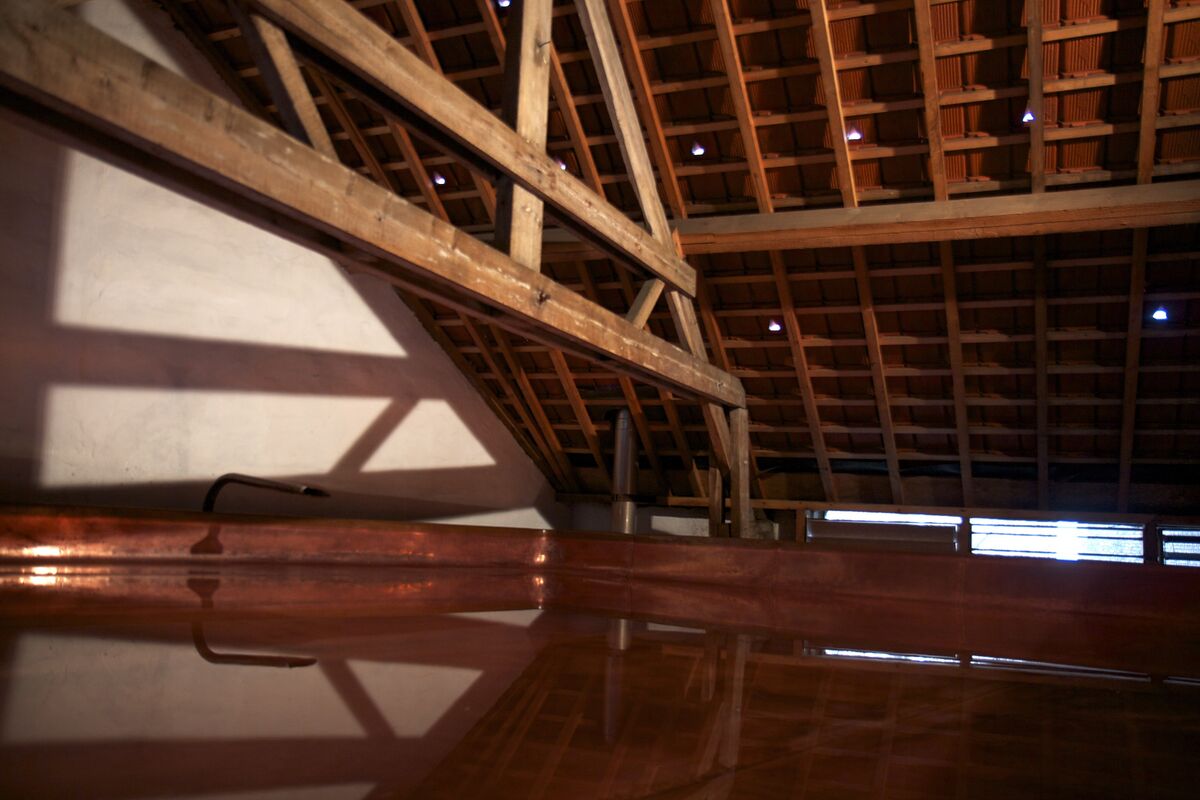
Coolship is the anglicized spelling of the original Flemish word "koelschip," but, ultimately, they are one and the same — a large, flat, open container that boiled wort is poured into to cool.
As the earlier described advances in brewing techniques and technology allowed brewers to control all aspects of fermentation, coolships eventually went the way of the dinosaur. Why leave anything to the whims of nature, right? Except in the Lambic region of Belgium, where local brewers kept the coolship tradition alive because they felt there was no other way to produce their highly regarded funky, sour and complex beers.
Fast-forward to the craft beer movement of late 20th- and early 21st-century America. Craft-beer brewers (who can make some pretty complex beers in their own right), and enthusiasts alike, became and continue to be a natural fan base for these wild and funky Belgian gems.
During a trip to Belgium in the mid-2000s to study these techniques, Russian River Brewing’s Vinnie Cilurzo, along with others including Allagash’s Rob Tod, started wondering — could we make spontaneously fermented beers back home? Although they were discouraged by many brewers telling them the Lambic region was the only place on Earth those beers could be made, a stop at Cantillon, who have brewed using coolships since 1900, changed everything. As Vinnie told The Brewing Network in a May 2019 interview, “The worldwide activity of [today’s] spontaneous fermentation can be pinpointed 100% to [Cantillon’s] Jean Van Roy telling brewers ‘You can spontaneously ferment anywhere. It may be different, but you can still do it.’”
A key factor in successful spontaneous fermentation is finding a climatological “sweet spot,” where the outside temperature is cool enough to chill the wort to fermentation temperature and kill any unwanted bacteria that can cause spoilage, yet warm enough for any naturally-occurring yeast to survive. This sweet spot, of course, varies by location. Allagash, in Portland, Maine, only brews with coolships in November and December. For Jester King, in Texas, coolship season is January and February.
Brewing in a wine-growing region makes California’s Sonoma County unique, according to the Cilurzos. “The thing that makes the grapes grow so well is that it’s pretty cool during the summer nights,” says Vinnie. Indeed, they didn’t realize how cool it would actually get when they designed the coolship room, in Russian River’s new Windsor, California brewery. It has ten windows, and “the first batch we did we had the windows open way too much … [it] didn’t ferment, it cooled so fast. It didn’t have time to pick up all the bugs and critters.”
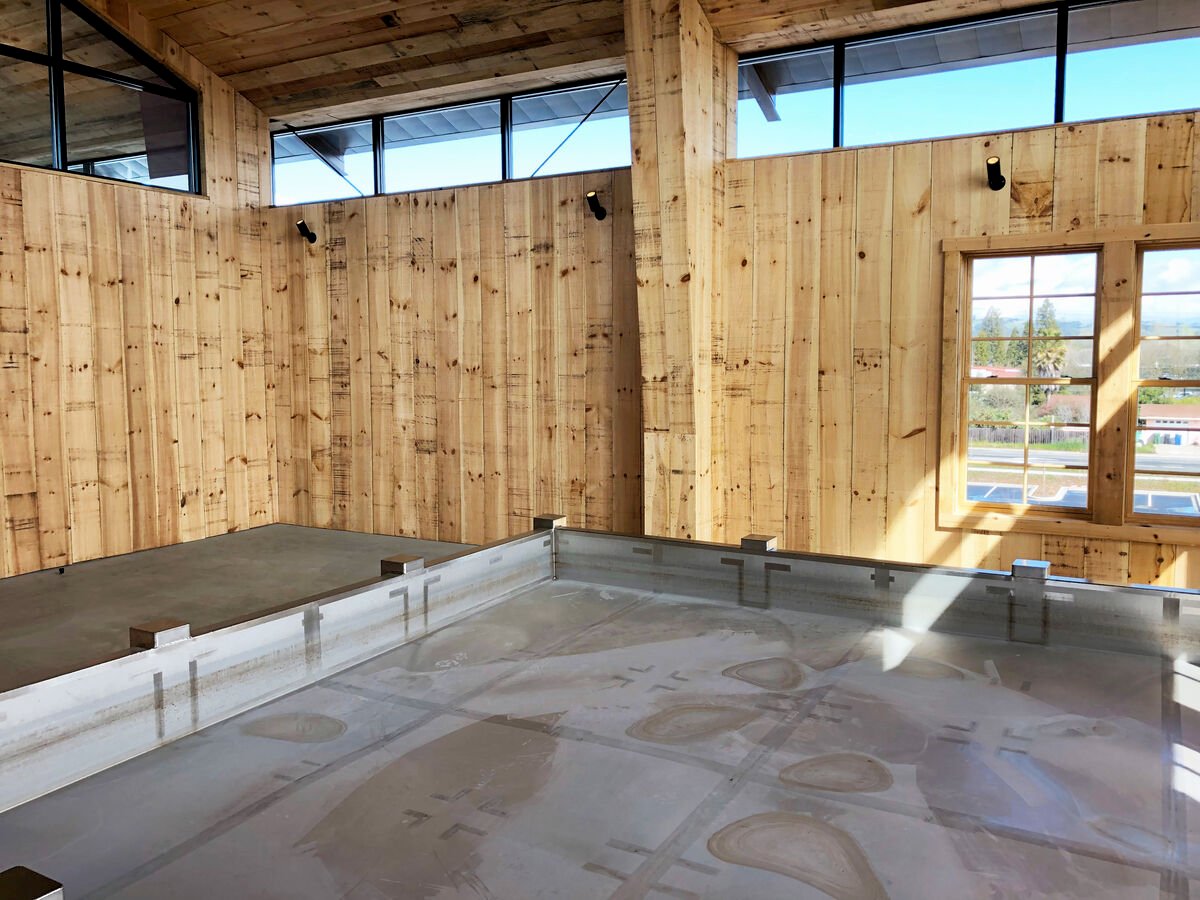
A key factor in successful spontaneous fermentation is finding a climatological “sweet spot,” where the outside temperature is cool enough to chill the wort to fermentation temperature and kill any unwanted bacteria that can cause spoilage, yet warm enough for any naturally-occurring yeast to survive.
That gives the Cilurzos a much bigger window to utilize their coolship. “Since we’ve only had two seasons with a true koelschip exposed to the outdoor elements, it is looking like December to April/May, with May pushing it a bit,” says Natalie. “We are trying some warmer weather brews as an experiment.”
Vinnie is excited for the opportunity. “Why not try a batch during the summer? Maybe you have to dump it, that’s the risk. But it may be absolutely magical. Or maybe it makes a beer that’s super acidic, but we need super acidic beer to blend. Maybe that’s where the summer spontaneous beers [can work].”
The coolship room at Russian River is indeed something to behold, almost like a church, right down to the entrance. A magnificent staircase leads up to a massive gothic-style door, surely rescued from an ancient church in Belgium or Germany, right? "We got this door on eBay, isn’t that funny?” Natalie admits. “It’s old wood with new construction, which I appreciate. I’d rather have the modern hinges, right?”
Similar to the coolship rooms in Belgium, the inside is completely lined in unfinished wood, ceiling to floor. Even the bar where tour groups are served is made from it. “Much like the inside of a barrel, we want it to be its own living environment in here, collecting bugs and critters as time goes on,” says Natalie. And though it’s new construction, even that wood has a history — courtesy of Sierra Nevada Brewing Company.
"We told Ken [Grossman] what we wanted to do and he said, ‘I have a bunch of lumber left over from harvesting all of the trees for the [Mills River, North Carolina] brewery,’” says Natalie. “He had a barn that was full of wood, and we got it. It’s Yellow and White Pine.”
Although the wood interior is traditional, other aspects of the room (aside from the overabundance of windows) are not. Again, Vinnie credits the open-mindedness of Cantillon. “The vaulted ceiling,” he says, “that’s not normal for a coolship room. Normally you’d want to contain more of the heat so that it drags out the process of cooling the wort. That was a whole thing with Jean at Cantillon saying to other brewers ‘You can do this anywhere.’ It doesn’t have to be the old traditional way.
When you blend spontaneous beer, whether it’s made in New York, Texas, California or wherever, it doesn’t just have to [use] 3-year, 2-year, or 1-year [old beers] like in Lambic. You can do whatever you want.”
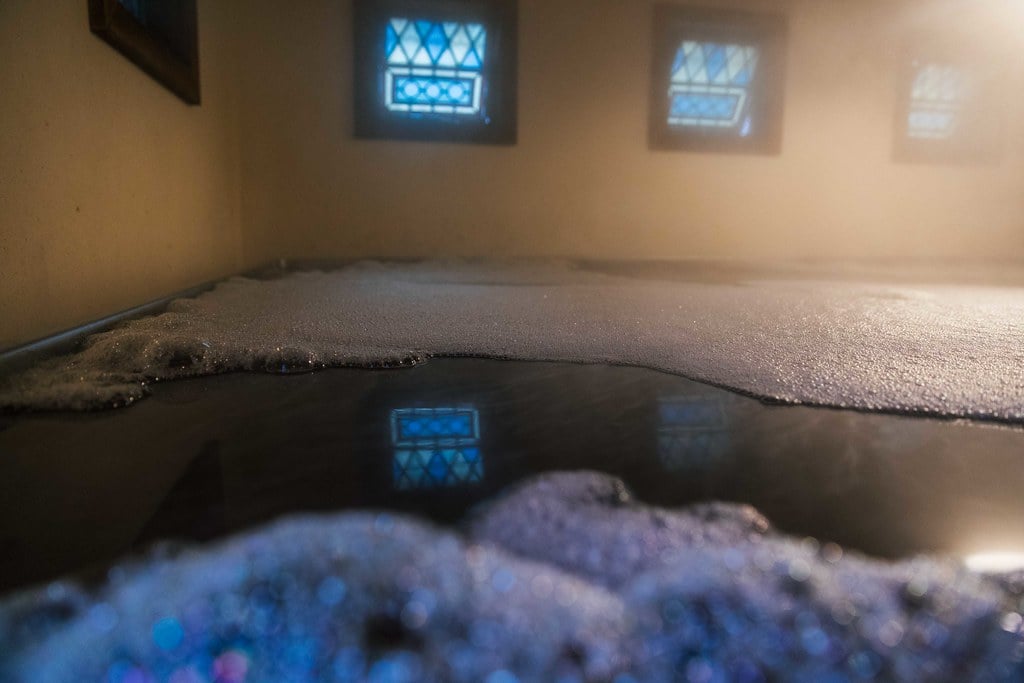
Header and Footer Photos Courtesy Flickr/Allagash Brewing



